Erica Verrillo's Blog, page 109
November 5, 2012
Biggered ... what the Penguin/Random House merger means for writers
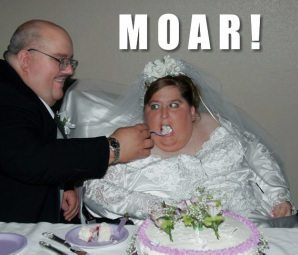 Last week I received this announcement from Random House:
Last week I received this announcement from Random House:"To Our Authors,
Our most important mission will always be to publish the work you entrust to us for everyone, everywhere, in every format, and on every platform. That mandate is a primary motivation behind Bertelsmann and Pearson, the parent companies of Random House and the Penguin Book group, signing an agreement this week to combine our respective trade book activities.
One of the defining characteristics of the new company I am most excited about is that it will be author- publisher- and editor-centered – just like Random House. When we join together we will be retaining the distinct identities of both companies’ imprints and you will benefit from an extraordinary breadth of publishing choices and editorial talents and experience. Our Random House imprint leadership remains endowed with creative autonomy, and financial resources, to decide which books to publish, and how to publish them. We expect this to continue in our new business, where we will build on the history and heritage of each of our storied brands. Your relationship with your editor and your publishing team will be unaffected by the new company.
A diversified retail and distribution marketplace for print and digital formats remains a key priority for Random House now, and in the future. Our investments in enhancing the supply chain and our marketing support will supply more services for physical retailers, while expanding our opportunities in the digital space. We expect to create more tools to help you take full advantage of the many online marketing platforms for growing your readership. And we certainly want to continue to expand our Author Portal, which has become an enormously popular and useful resource for so many.
For now, it is business as usual at Random House and Penguin. Soon, we hope to join together to offer an even deeper backlist, alongside our newly published titles. In our partnership, we will be even better positioned to provide copyright protection and support your intellectual property.
Random House and Bertelsmann believe strongly in the future of trade book publishing, and our continuing commercial and cultural success is a major reason why Bertelsmann is extending and expanding its investment and support with the new company. For us, separately and in partnership, it is and always will be about the books. Your books.
All my best,
Marcus Dohle"
If you are as impressed as I am by large quantities of horse manure, the true significance of this announcement will have completely escaped you.
So now, boys and girls, we will have a pop quiz.
What is the underlying meaning of the above passage?
a) This merger does not affect me, because I am never going to get published anyway.
b) WOW! If I ever do get published by Bertelsmann/Pearson/ Random House/Penguin, I'll be famous all over the world, and maybe even in Outer Space.
c) What the hell is a deeper backlist?
d) It is and always will be about the books. Your books.
(The correct answer is: e) We're screwed.)
(The first sentence is the tip-off. Notice the close proximity of the terms: "entrust", "mandate", "mission" and "everyone, everywhere, in every format, and on every platform.")
The reason that the union of the two largest publishers in the world is terrible for writers is unclearly stated in paragraph two: "we will build on the history and heritage of each of our storied brands."
The history of these publishing houses has nothing whatsoever to do with storied brands. In fact, it has nothing to do with "marketing support", "platforms", or "supply chains" either. The origin of Random House, as stated by Bennet Cerf, was "to publish a few books on the side at random." And so they did. Many random authors, who couldn't find a home elsewhere, were published by Random House (Ayn Rand and Jerzy Kosinski among them). The heritage of Penguin was to publish Lolita, Lady Chatterly's Lover, and Deer Park, books which had been rejected by scores of publishers (back then we still had scores), and which, once they were finally published, made it onto banned book lists everywhere.
This is the proud heritage of Random House and Penguin: to publish groundbreaking new ideas without regard to the "market." Because that is the purpose of a publishing house - the dissemination of ideas.
We will be seeing fewer of them in future.
Bertelsmann, a privately owned company based in Germany, owns publishing, music, and broadcasting companies in 60 countries, including: BBC Books, Multnomah, Triumph Books and the largest English trade publishing house in the world - Random House, which in turn owns Crown Publishing Group, Knopf Doubleday, Crown, Harmony Books, Ten Speed Press, Tricycle Press, Celestial Arts, Three Rivers Press, Broadway Books, Clarkson Potter, Watson-Gupthill, Back Stage Books, Anchor Books, Doubleday, Vintage, Pantheon Books, Delacorte, Fodor's, Bantam Dell, Del Rey, The Dial Press, The Modern Library, and ... (wait for it) ... One World.
Published on November 05, 2012 13:04
November 3, 2012
How to build your own author platform – from scratch
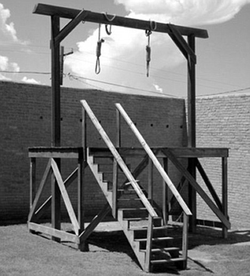 The first time I heard the phrase “author platform,” it almost instantly conjured an image of myself, with a noose around my neck, standing in front of a crowd of people who were waiting for the Big Drop.
The first time I heard the phrase “author platform,” it almost instantly conjured an image of myself, with a noose around my neck, standing in front of a crowd of people who were waiting for the Big Drop.I hoped it would be a quick, painless death. So far, it hasn't been. I have spent many a grueling hour trying to build this “platform,” only to discover that I am not heavy enough. Day after day, I am left dangling. Gasping for air.
Those of you who were born prior to the Internet Revolution may not know what an “author platform” is. So, I am going to explain it to you.
An author platform is Newspeak for “fame.” In concrete terms, it means people recognize your name. Perhaps you have won a contest, such as the Nobel Prize. Or maybe you have gotten arrested many times like Lindsay Lohan, or not sent your kid up in a balloon, or have faked a moon landing like those chaps at NASA. People must know who you are in order for you to build a platform.
Nowadays, many agents will insist that you have this “platform” before they will even consider representing you. This is a catch-22. How can you be a “name” in the publishing world if you have not been published?
Without doing something incredibly stupid, this is how you can build a platform:
Put up a website. I assume you have already done this. Without a website, YOU DON'T EXIST.
Write articles if you are a non-fiction writer, and publish them online. There are plenty of online journals and ezines. Basically, you must turn yourself into an expert. Use ALL of your experience for this. Have you had a child? Several? Have you taught them to drive? Did you survive high school? Do you know how to make a smashing cup of tea? Have you recently discovered the cure for cancer? Pick your area of expertise. Everything counts.
If you are a fiction writer, you may have to get arrested. You also have the option of publishing short stories. Go to duotrope.com and find a literary magazine that will give your stories a home.
If you have a book ready for popular consumption, and not that even agent in Zanzibar will answer your query letters, then you will have to go Indie. You have no choice. But first, before you epublish, take excerpts from your forthcoming book and publish them – as short stories for fiction writers and articles for non-fiction. Keep submitting. This is the SOLE remaining area of publishing that does not require an agent or having been President.
Write reviews for sites that get a lot of traffic, such as blogcritics.
Once you've epublished give talks, in person, and give webinars and/or interviews online. You've written a book. That implies that you have something to say. Say it.
Even if you have published your book the old-fashioned way (by sleeping with an editor for a major publishing house), you will have to do all of this anyway, so you may as well start now.
Published on November 03, 2012 09:57
November 1, 2012
Building Character (for writers)
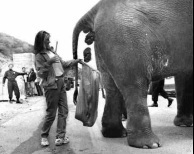 Years ago, when I was teaching English to Japanese English teachers (I know that sounds odd … you had to be there), one of my teacher/students informed me that, in her school, the students did all the clean-up. “All?” I asked. Oh, yes, she informed me. They wiped the blackboards, swept and mopped the floors, washed the windows. “It builds character,” she said.
Years ago, when I was teaching English to Japanese English teachers (I know that sounds odd … you had to be there), one of my teacher/students informed me that, in her school, the students did all the clean-up. “All?” I asked. Oh, yes, she informed me. They wiped the blackboards, swept and mopped the floors, washed the windows. “It builds character,” she said. Basically, things that build character are comprised of anything that is disagreeable. For some strange Calvinistic and/or Japanese reason, character cannot be built by winning a prize, taking a swim, or eating my delicious apple streusel cake. One must suffer to have character.
I doubt that this is true in general, but in specific, as it applies to writers, it is definitely true. It is not necessary for you to fulfill the Romantic ideal: a sensitive, unshaven (women too), starving creature agonizing in a garret. Yes, you will eventually get to do all that. But the real suffering, the real character building, comes not in the process of writing, which is sheer fun and therefore useless for building character, but in the process of sharing what you've written.
These are the writer's steps to building character:
Step 1: Don't publish too early. You have written a book. Don't get it out there. Instead, get it critiqued, as harshly as possible. You want to bleed.
Step 2: When you have bled enough, still don't try to publish. Write another book. Yes, that's what I said. Write ANOTHER BOOK. What kind of writer do you expect to be if you can only write one book? Then go back to your first book and revise it.
Step 3: Write short stories and articles. Get them critiqued. Bleed.
Step 4: Submit your short stories and articles to top-ranking magazines and ezines. You will be rejected. Bleed and revise. Submit again. Each time you get a rejection, re-read your work and revise.
Step 5: AGH! Somebody published your story! Your character is destroyed! Sadly, no. Read the published version. It's amazing how many mistakes you can catch after your story has been published. Ouch.
Step 6: At this point you have so much character you need a transfusion. Start submitting your book to agents. They will reject you. Each time you get a rejection, look at your query letter and revise it. Submit again.
Step 7: AGGHHH! An agent wants to represent you! Now, you're cooked. Don't get too comfy. She or he will want to take your manuscript and change everything in it. You have to decide what to change and what not to change. Your character is firming up nicely.
Step 8: You have followed your agent's suggestions - or not, as the case may be. And NOTHING happens! Not one single publisher is interested in your book. They say awful things about it. You have to decide if some of these awful things are true. They might be. Great character-building technique.
Step 9: AAAGGGGHHH!!! Someone wants to publish your book!! You are fried!! You thought the agent was harsh. Wait until you see what an EDITOR does to your manuscript!! It will be drawn and quartered before your very eyes. They will change your title. You will want to die.
Step 10: You now have character. Write another book. This time it had better be good.
(Repeat steps 1 through 10 as often as necessary.)
(Building Character was first published on Blogging Authors 11/1/12: http://www.bloggingauthors.com/)
Published on November 01, 2012 07:58
October 29, 2012
Everything I Did Wrong: Don't Do What I Did! Part 1
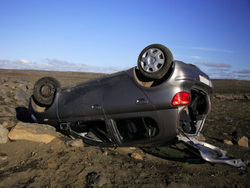
Many first-time authors focus on publishing the way a pregnant woman focuses on birth. The soon-to-be mother thinks, “I'm going to have a baby!” not “I'm going to have a sullen teenager who hates me and bashes up my car.” Your book won't hate you, but you will hate yourself if you don't prepare for its future. I made a number of critical mistakes in publishing both my print and ebooks. If you don't do what I did, your book won't have so many accidents later on.
My first mistake: I didn't prepare.
I didn't have a website in place several months before my books were published. I didn't create “buzz” by announcing my upcoming book to the relevant audience. I didn't contact reviewers four months in advance of publication (for ebooks). I didn't have a cover for my ebook ready before the publication date (to send to reviewers). I didn't schedule talks and appearances to coincide with the publication date.
Instead of doing all these things before the publication date, I did them afterwards. And now my book has bashed up my car.
This is what you should do:
1. Launch your author's website now. If you don't have a book published, just put your photo and bio on the home page (see the “marketing” entry). Begin a blog. You are a writer, so take your blog seriously. Write about your area of expertise if you write non-fiction. If you write fiction, you can write about anything, as long as it is entertaining and/or informative. Unless it is a sample chapter of your upcoming book, do not post unpublished work on your website! An author's website is supposed to showcase his or her accomplishments.
2. Five months before the publication date start working on your ebook cover. Don't do this yourself unless you have a flair for design. Hire an ebook designer, not a graphic designer. There are many online. Make sure you look at their portfolios first. You can also contact writers who have eye-catching ebook covers and ask them who the designer was.
3. Four months before your book is published, contact reviewers and send them the galleys. (For ebooks, reviewers may request a PDF file or hard copy.)
4. Two months before the publication date, start scheduling talks and appearances.
5. Six weeks before the publication date start contacting groups and organizations which might be interested in your upcoming book. They will ignore you for the most part, but do it anyway.
6. Maintain your blog. Two entries a week. You can blog about everything you did right.
Published on October 29, 2012 07:08
October 25, 2012
Lions and tigers and bears, oh my! Rejections: Famous Authors, Part 3
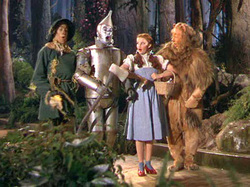 There seems to be no end to the mistakes publishers make - and the Wizard of Oz was one of the biggest. But there have been many less spectacular mistakes as well. The lesson writers should learn from this list is: Develop a thick skin. You'll need it.
There seems to be no end to the mistakes publishers make - and the Wizard of Oz was one of the biggest. But there have been many less spectacular mistakes as well. The lesson writers should learn from this list is: Develop a thick skin. You'll need it.The Wizard of Oz by L. Frank Baum
'Too radical of a departure from traditional juvenile literature.'
The Picture of Dorian Gray by Oscar Wilde
'It contains unpleasant elements.'
Look Homeward, Angel by Thomas Wolfe
'Terrible.'
The Blessing Way by Tony Hillerman
'get rid of the Indian stuff.'
Little Women by Louisa May Alcott
'Stick to teaching.'
The Good Earth by Pearl S. Buck
'The American public is not interested in China.'
Lady Chatterley's Lover by D.H. Lawrence
'for your own sake do not publish this book.'
Garfield by Jim Davis
'Too many animals, and cats don’t sell.'
Zane Grey
(93 books, 21 films)
'You have no business being a writer and should give up.'
Remembrance of Things Past by Marcel Proust
'My dear fellow, I may be dead from the neck up, but rack my brains as I may I can't see why a chap should need thirty pages to describe how he turns over in bed before going to sleep.'
Published on October 25, 2012 06:09
October 21, 2012
NEVER GIVE UP! NEVER SURRENDER!
 For writers, rejections aren't just inevitable – they are a way of life. Every writer gets rejections. Every. Single. One. There are no exceptions. Here is a tally that should, if not encourage you, at least bring you back to reality. The reality is this: keep your day job, but KEEP WRITING!!
For writers, rejections aren't just inevitable – they are a way of life. Every writer gets rejections. Every. Single. One. There are no exceptions. Here is a tally that should, if not encourage you, at least bring you back to reality. The reality is this: keep your day job, but KEEP WRITING!!The Princess Diaries, by Meg Cabot, was rejected by 17 publishers
Frank Herbert’s Dune was rejected 20 times.
Thor Hyerdahl's Kon-Tiki was rejected 20 times.
Richard Hooker's novel M*A*S*H was rejected 21 times.
James Joyce's Dubliners was rejected 22 times.
John Grisham’s first novel was rejected 25 times.
Margaret Mitchell’s Gone With the Wind was rejected by 25 publishers.
Madeleine L"Engle's A Wrinkle in Time was turned down 29 times.
Stephen King's Carrie was rejected 30 times.
Gone with the Wind was rejected 38 times.
Jonathan Livingston Seagull was rejected 40 times.
Zen and the Art of Motorcycle Maintenance was rejected 121 times.
Chicken Soup for the Soul by Jack Canfield and Mark Victor Hansen received 134 rejections.
Louis L’Amour was rejected over 200 times before he sold any of his writing.
And the grand prize goes to:
C.S. Lewis, who received over 800 rejections before he sold a single piece of writing.
Published on October 21, 2012 07:38
October 20, 2012
Apple Streusel Cake
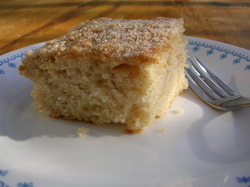 Doesn't it look good? Apple Streusel Cake
Doesn't it look good? Apple Streusel CakeThis is a light, moist cake with a sweet crunchy topping. It is very easy to make. The trick is to chop the apples very thin so they cook completely through. The best apples to use for this recipe are mealy apples (not Granny Smiths). Store at room temperature. Delicious warm.
1 1/2 cups flour
2 1/4 tsp baking powder
1/2 cup sugar
1/2 tsp. salt
1/2 tsp cinnamon
1 large egg
3/4 cup milk (skim is fine)
1/4 cup oil
1 medium sized raw apple, finely chopped
STREUSEL TOPPING:
4 tbsp sugar
2 tbsp flour
1 tbsp butter
1/2 tsp cinnamon
Spread finely chopped apples in a single layer over the bottom of a well greased 8 x 8 inch glass pan. Mix flour with baking powder, sugar, salt and cinnamon. Beat egg, milk and oil and pour into dry ingredients. Mix. In a separate bowl mix together the streusel topping ingredients to make a crumbly mixture (use your fingers) and sprinkle on top of the batter. Shake the pan slightly so the streusel topping is distributed evenly over the top of the cake. Bake in a 350 degree oven approximately 25 – 30 minutes or until the top is golden brown.
Published on October 20, 2012 14:07
October 19, 2012
How I Got Published: Part 1, The Ecstasy
 It was September 2005. I was out in my garden murdering plants and Communing with Nature when the phone rang. I didn't go in to answer it. I never answer the phone, not even when I am two inches away from it. An hour later, when I'd finished Communing and wiped the blood off my hands, I listened to the message. It was someone I didn't know telling me that RH wanted to publish my books. All of them.
It was September 2005. I was out in my garden murdering plants and Communing with Nature when the phone rang. I didn't go in to answer it. I never answer the phone, not even when I am two inches away from it. An hour later, when I'd finished Communing and wiped the blood off my hands, I listened to the message. It was someone I didn't know telling me that RH wanted to publish my books. All of them. I listened to the message a second time and recognized the name of my agent – a person with whom I had spoken several years earlier and who had never given me cause for hope. After two years of waiting anxiously by the phone, I had given up on any chance of publishing and reverted to the comforts of vegetal genocide.
I called my daughter and told her about RH.
“Hey,” she said. “I've heard of them.”
“Why are you making that sound?” I replied.
“Well (harharhar), I never thought (harharhar) you'd actually get published (harharharharhar)...”
My daughter is the only person on earth who can produce totally conflicting emotions in me.
And thus begins the first emotional stage of Publication: Ecstasy. The other five stages are: denial, anger, bargaining, depression, and acceptance. I'll get to those later when I talk about contracts.
Before I could say New York Times Bestseller, I found myself scurrying to comply with my agent's agenda. I was instructed to come to The City to lunch with The Editor and to tour RH. I was also instructed to cut my hair and make myself presentable. (This last task proved beyond me.) I got into a car, then on a train, and then not into a taxi (why aren't there ANY available taxis in The City?), and then ran, in the rain, fifteen blocks to RH. By the time I arrived, I was wet, flushed, and my stockings had fallen down to my ankles.
“You look just like a children's book author should look,” said the agent's assistant. Her lack of irony was not a good sign.
 Silently, my agent bade me sit.
Silently, my agent bade me sit. There was only one place to sit – a bench made out of something very hard and very unforgiving.
“Just take it in,” said my agent in soft, reverent tones.
I took it in. We were clearly in the belly of the beast. BERTELSMANN was displayed in large brushed-steel letters on the wall opposite the entrance. There were matching elevators. A bored young person sat behind an enormous bulwark. Behind me was a huge, brutally lit wall encasing the hundreds, nay thousands, of famous books RH had published.
I knew I was in for it.
After receiving permission to ascend, we took the elevator to the 10th floor where I was introduced to my editor, and to 200 other children's book editors. Some of them shook my hand. Others turned their backs (these were the writers of the Golden Books - a disgruntled lot). I met the person who would be in charge of marketing my book. She gave me the look my attire deserved.
Then we went to lunch. My agent had given me instructions to keep my mouth shut. So, I sat there and ate sanitized quasi-Greek food while my editor and agent spoke in hushed voices.
Why hushed?
Because all the other agents and editors in the publishing industry were at adjacent tables trying to eavesdrop on one another's conversations and potentially steal … something. The conversation at my table revolved around “buzz” and other marketing terms. As it turned out, I actually didn't have to say anything, because there was nothing to say. By anyone. RH was a machine, a behemoth, a juggernaut. Nobody could stop it. Nobody could influence it. We were all just tiny teeth in its gargantuan devouring jaws.
“The publishing industry isn't just about bestsellers,” I muttered. “Books are ideas. Sometimes you have to take a chance on a new idea.”
My editor leveled her gaze at me and said, without a hint of remorse, that she had turned down J. K. Rowling because her books were “too long, and nobody would read them.”
It was at that point that I began to enter into the next stage of Publication: Denial.
Published on October 19, 2012 13:57
October 18, 2012
Best book review of all time
 William McKeen liked this “review” so much he had it framed. HST is Hunter S. Thompson, the notoriously foul-mouthed journalist who wrote – and apparently lived – Fear and Loathing in Las Vegas.
William McKeen liked this “review” so much he had it framed. HST is Hunter S. Thompson, the notoriously foul-mouthed journalist who wrote – and apparently lived – Fear and Loathing in Las Vegas. William McKeen is the chair of the Department of Journalism at Boston University. He has a great sense of humor. McKeen's biography of Thompson, Outlaw Journalist, is described as “painfully honest.” In keeping with that sentiment, this review can only be considered "heartfelt."
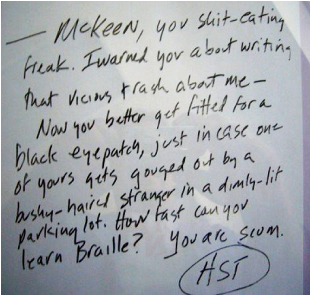
Published on October 18, 2012 07:08
REVIEWS: Best book review of all time
 William McKeen liked this “review” so much he had it framed. HST is Hunter S. Thompson, the notoriously foul-mouthed journalist who wrote – and apparently lived – Fear and Loathing in Las Vegas.
William McKeen liked this “review” so much he had it framed. HST is Hunter S. Thompson, the notoriously foul-mouthed journalist who wrote – and apparently lived – Fear and Loathing in Las Vegas. William McKeen is the chair of the Department of Journalism at Boston University. He has a great sense of humor. McKeen's biography of Thompson, Outlaw Journalist, is described as “painfully honest.” In keeping with that sentiment, this review can only be considered "heartfelt."

Published on October 18, 2012 07:08



